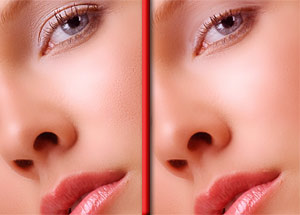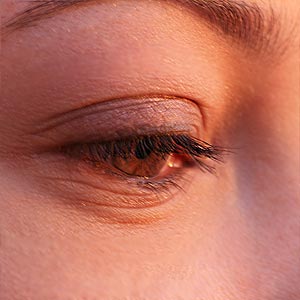Cosmetic Dermal Filler

With every tick of the biological clock, major changes in the fat pockets in our face bring about an older, tired appearance. A sagging, droopy and older look is the inevitable result of the passage of time.
Men and women who are keen in combating the facial changes associated with aging consider dermal fillers as a viable option. Dermal fillers are viable because the results are quick and immediate, painless and affordable non-surgical cosmetic treatment procedure.
Learn more about dermal fillers. Taking years off the face, restoring and retaining youthful appearance, solving issues like wrinkles, folds, fine lines and treating acne scars, augmenting cheeks - all these are possible with dermal fillers. Find answers to questions like safety concerns or dermal fillers side effects, suitability, persons qualified to administer dermal fillers and dermal fillers cost before actually going for it.
Dermal filler uses
Few decades back, plastic surgery was the popular option for those who desired a rejuvenated natural look. Most of those effects are now possible with the use of dermal fillers. The key difference is that in dermal fillers the changes are possible even without actually going under the knife. Dermal fillers can give a more natural appearance than surgical face lifts.
Dermal fillers are also called 'liquid facelifts', injectable fillers or injectable dermal fillers, cosmetic dermal fillers and soft-tissue fillers. The administration of dermal filler is sometimes referred to as 'soft tissue augmentation'. The procedure involves filling the middle layer of the skin, the dermis with a substance which is injected into the skin. Dermal fillers play a multi-faceted role of correcting some areas, filling depressed areas, improving areas and adding volume to some areas.
- Fill in wrinkles, fine lines and deep creases.
- Treat and fill acne scars.
- Fill out hollow cheeks.
- Reshape nose tip or chin.
- Replace soft-tissue volume loss.
- Give definition to cheeks or plump up the cheeks.
- Pout up the lips or enhance lip fullness.
- Contour jaw line and other areas of the face.
- Mask the bags under the eyes.
- Open droopy eyes and lift the eyelids.
- Rejuvenate sunken eyes.
- Lift the mouth corners.
- Add volume to the skin.
- Remove frown lines between the eyes.
The filler substance in dermal fillers for cheeks and acne scars is either natural or synthetic. Both work the same way. The goal is to return the dermis to its original youthful state, resolve the facial issue and retain a youthful look.
Dermal filler types
There are many types of dermal fillers, some based on natural substances derived from the human body, others are synthetic forms of these substances and some may contain synthetic, bio compatible compounds.
All dermal filler types can achieve the desired results but the difference is in the way each act and the effective duration period. Also, no one filler is ideal for all areas of the face. It may vary and depends on many factors like area of injection, injection technique, degree of correction achieved as well as an individual's body metabolism.
Temporary dermal fillers
Collagen: Collagen is a naturally occurring protein and the main component in cartilage, teeth and bones. It provides strength and structure to the skin. It is derived either from human skin or cows (bovine collagen). The duration of collagen dermal fillers is 2-4 months. Collagen fillers are more likely to cause allergic reactions as compared to the other temporary dermal filler, namely Hyaluronic acid fillers.
Hyaluronic acid: Is a natural chemical constituent of the skin which is found naturally throughout our bodies in our skin, bones, joints and eyes. It acts as a lubricant and moisturizer due to its ability to attract and store water. The duration of Hyaluronic dermal fillers can be 6-9 months. Clinically, HA is produced usually from bacterial and not from animal or human sources.
Semi-permanent dermal fillers
Calcium hydroxylapatite: The substance is considered bio-compatible with the human body. Calcium hydroxyapatite is a mineral-like compound found in bone and soft tissues. It is often used to fill the moderate-to-severe creases such as nasolabial folds, marionette lines and frown lines.
It is also used to enhance fullness of the cheeks and other facial contours. Calcium hydroxylapatite is bio- synthetically produced, which means that no animals or animal products are used. It is made from microspheres of a synthetic version of the material found in bones and teeth. The results may last as long as 1-2 years.
Poly-L-Lactic Acid: A biodegradable, bio-compatible synthetic polymer from the alpha hydroxy acid (AHA) family, poly-l-lactic acid dermal fillers are used in filling facial depressions such as sunken cheeks, for facial contouring and to smooth deep lines, hollows and depressions. It is made from absorbable suture material. The results can last up to 1-2 years.
Permanent dermal fillers
These are made from gel and water. Typically permanent dermal fillers are used to increase volumes of regions of the face such as the lips, remove deep wrinkles around the mouth and from nose to the corner of the mouth, correct deeper facial lines and creases. An important fact is that removal of permanent dermal fillers may not be easy and is possible only through a surgical procedure in case the desired result is not achieved. Permanent fillers can last 2-6 years.
- Collagen dermal fillers provide structure and elasticity. Mostly used to sculpt and reshape facial features such as the lips, nose, cheeks, and chin.
- Hyaluronic acid dermal fillers are synthetic dermal fillers that provide moisture and nutrients to the treatment area, which rejuvenates the skin and fills contours. It is believed to be safer than collagen.
- Calcium hydroxyapatite dermal fillers are similar to hyaluronic dermal fillers. They are inorganic materials which break down slowly and provide lasting results. The flip side is they have greater risk of infection and adverse reaction.
As much as it is important to be aware of various dermal filler substances, it is equally important to understand how injectable or cosmetic dermal fillers work in the treatment of acne scars and augmentation of sunken cheeks. Understanding what happens helps to be mentally prepared and also raise questions if required during the process.
Dermal filler for acne scars
Acne scars are formed when the inflamed acne bumps heal. It is a part of the healing process that the skin undergoes. Another possible cause is when deep scars are formed due to incessant picking or popping at the acne bumps or blemishes. Most of these blemishes clear up, some can leave behind scars. Although acne scars cannot hurt us, they are not pleasant to live with. Also, the visible effects of acne scarring worsen with age.
One percent of dermal collagen which contributes to healing and regeneration within the dermal layer is lost annually. Skin tone also diminishes with age making the scars more visible. There may be various options to treat acne scars. Dermal fillers treatment is most suitable in instances where the scarring has resulted in pits and sunken areas. Dermal fillers are usually the best treatment option for patients with less separated atrophic acne scars.
Dermal fillers consist of liquid substances that are injected into the scar area. When the substances are injected, they will elevate the surface area of the skin and also wipe the appearance of acne scars to a great extent. Before actually getting treated for acne scars, consult your physician or a trusted and accredited dermatologist. Not all forms of scars and skin types benefit from this type of skin treatment procedure.
Dermal fillers for cheeks
Sunken cheeks are a natural and very common aging sign. Certain parts begin to lose subcutaneous fat. This will lead to loss of volume and decreased support for facial features. The effects include cheeks sinking in and the skin sagging leaving a hollow or sunken cheek.
The area below the cheek bone known as buccal cheek area tends to become more indented. The net result is an aged look. Volume depletion can make the areas around the eyes appear sunken, wrinkled, folded with droopy eye bags.
Dermal fillers are a preferred option to treat sunken cheeks. When injected under the facial skin, dermal fillers help to plump up and fill in the hollow cheeks. Dermal fillers are also effective in smoothing out wrinkles around the lips, eyes and forehead. They also offer fullness to the cheeks and lips.
Preparing for injectable dermal filler treatment
Here are suggestions to prepare the body and mind for a quick result-oriented dermal filler procedure. These are cautionary measures to make the procedure simple and pain free.
- Exercise regularly and eat a healthy diet.
- Keep the area of your skin that is going to be treated clean and healthy.
- Drink plenty of water and apply moisturizer regularly.
- Get an allergy test done.
- Wait till complete recovery if an existing skin condition is unfavorable for treatment.
- If you have any skin disorders or skin allergies, discuss with dermatologist before actually choosing dermal fillers.
- Share your detailed medical history with the doctor to avoid adverse outcomes.
- Find out information on cosmetic fillers best suited for the area that you desire treatment.
Dermal fillers side effects
There are numerous dermal fillers that have been approved by the US Food and Drug Administration (US FDA). Many more are pending approval. A side effect, though a rare occurrence cannot be totally ruled out and even if experienced is usually temporary in nature. The potential side effects are listed in the dermal filler labels but there is no mention about the probable time. There are instances where they may show up months after the procedure.
Medical experts opine that serious adverse events associated with the fillers are extremely rare. Dermal fillers have not been tested in pregnant women, so their use would normally be not advised by practitioners.
Knowing possible side effects definitely helps in the decision making process. Also, it prepares the individual to be vigil and seek immediate help without any delay.
- Headache, flu-like symptoms or respiratory infection after completion of dermal filler procedure.
- Unexpected changes to the surface of the skin like redness of the skin, some pain and bruising, eyelid drooping, facial muscles weakening sensation.
- Swelling
- Allergic reactions
- Infection
- Bleeding, scars
- Blisters and cysts
- Lumps and bumps
- Numbness
- Migration (filler material moving to another site on the face)
Top of the Page: Cosmetic Dermal Filler
Tags:#dermal fillers #dermal fillers for acne scars #dermal fillers for cheeks #cosmetic dermal fillers #injectable dermal fillers #dermal filler side effects #permanent dermal fillers #cost of dermal fillers
 Beauty
Beauty Facial Skin Care
Skin Care Essentials
Men's Skin Care
Beauty Control - Sunscreen
Sunburn Remedies
Natural Sunblock
Beauty Care Routine
Skincare Tips for Teens
Dry Skin Care
Asian Skin Care
Black Skin Care
Pregnancy Skin Care Tips
Oily Skin Care
Skincare For Aging Skin
Common Skin Problems
 Crow's Feet
Crow's Feet Hyperpigmentation
Melasma
Acne during Pregnancy
Back and Chest Acne
Adult Acne in Women
Excessive Sweating
Whiteheads
Cause Dark Eye Circle
Chapped Lips
Age Spot
Skin Cancer Symptom
Skin Care Treatments
 Chemical Skin Peels
Chemical Skin Peels Radio Frequency Skin Tightening
Electroporation Beauty Treatment
Home Remedies for Large Pores
Dermaplaning Benefits
Manuka Oil Benefits
Skin Needling
Cheek Fillers
Cosmetic Dermal Filler
Skin Lightening
Skin Exfoliation
Bamboo Massage
Dry Skin Brushing
Stretch Mark Removal
Freckle Removal
Rosacea Treatment
Skin Care Routine
Tretinoin Cream Benefits
Alpha Hydroxy Acid
Homemade Face Mask
Bath Salt Recipe
Tea Tree Oil
Wrinkle Cream
Almond oil Benefits
Jojoba Oil
Handmade Soap
Eye Creams
Facial Cleanser
Botox Cosmetic
Benefit of Aloe Vera
Shea Butter Benefit
Top of the Page: Cosmetic Dermal Filler
Popularity Index: 101,364

